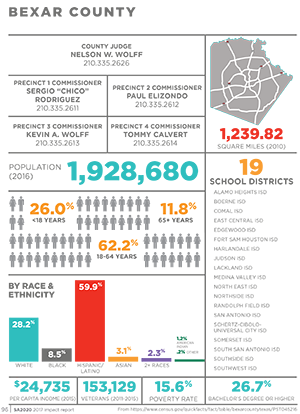The City Council profiles, a section of our 2017 Impact Report, show a snapshot of each City Council district. See demographic information, a selection of SA2020 indicators, and other highlights by district, City, and County level. By looking at each part of San Antonio individually, we can see where we, as a community, need to double down efforts, create targeted programs and policies, and distribute resources most effectively.

